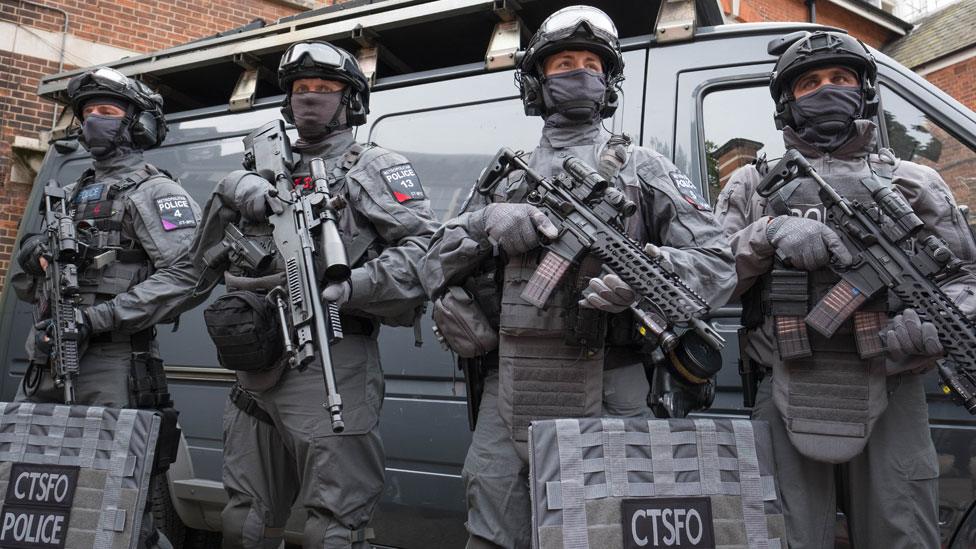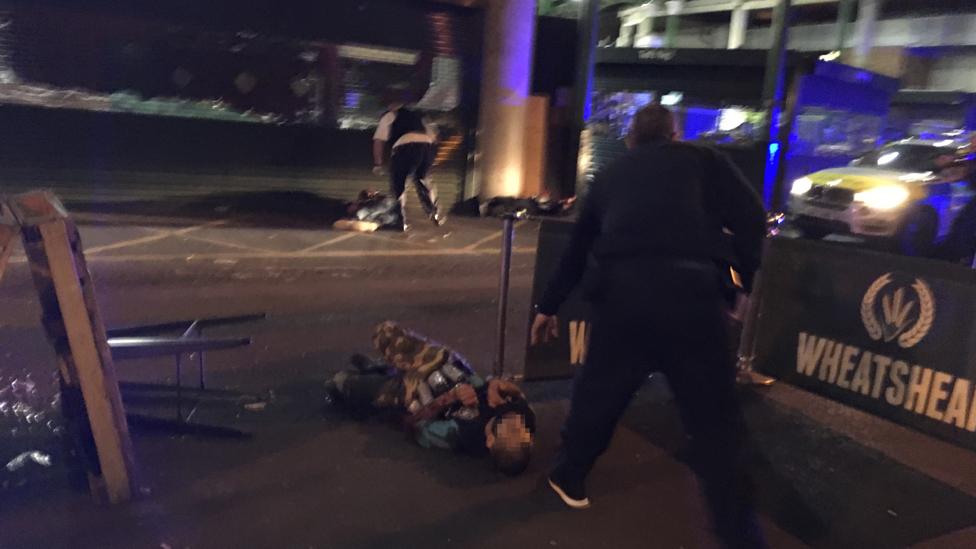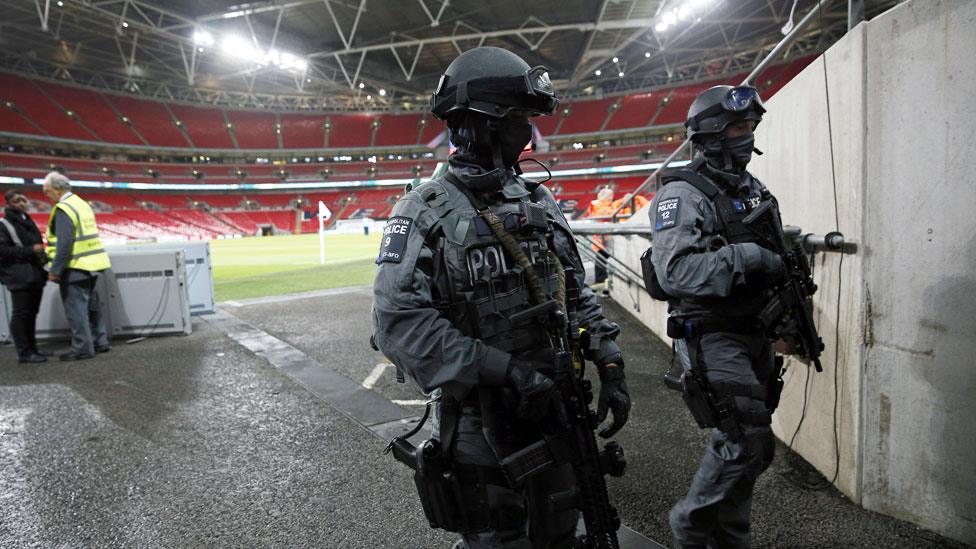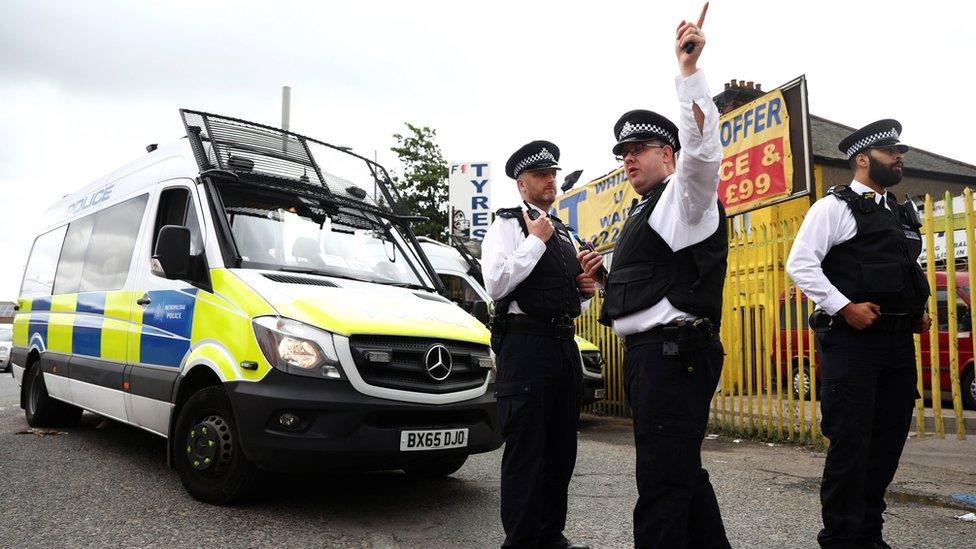How has armed policing changed?
- Published

The new elite CT-SFO force was unveiled in London last year
The number of police on our streets - armed or not - is now at the heart of an election row between the Conservatives and Labour over how to prevent acts of terrorism.
With three attacks in 75 days, Labour has claimed that police cuts since 2010 have gone "too far" and the public cannot be protected on the cheap.
Prime Minister Theresa May has said counter-terrorism policing budgets have been protected and it's not only a numbers game - it's about the powers these officers are given.
Reality Check: What has happened to police numbers?
What we know so far: The facts of the attack
Read more from Dominic - What we have learned
Between September 2010 and September 2016 police numbers across the board in England and Wales fell by 18,991, or 13%, according to the Home Office. But the National Police Chiefs' Council does not disclose counter-terrorism police officer numbers.
As of March 2016, there were just over 5,600 authorised firearms officers across the board in England and Wales, down from almost 7,000 in March 2010.
But while it's true to say that armed policing numbers have fallen, they are also now going back up - and their roles and training have changed quite dramatically. The officers being recruited today cannot be directly compared with those of the past.
So how and why have things changed?
The number of armed police fell after 2010 after the then coalition government imposed a 20% cut on policing budgets.
Many armed officers, who volunteer for the role, opted for retirement. Not only is the job incredibly demanding, but a lot of older officers began to leave forces amid uncertainty over reforms of policing pay and conditions.
Alongside that, chiefs have had to combat a genuine reluctance among some suitable officers to pick up a gun out of fear that they will be dragged through the courts if they make a mistake.
These falls in armed officers long concerned counter-terrorism chiefs - but the matter came to a head after the devastating attacks on Paris. Could similar marauding attacks on the UK be confronted? Were there enough armed officers to get to an attack outside the main metropolitan areas?

The attackers were found and shot dead by police with remarkable speed
Plans have long existed to call in the SAS in such a major emergency - but in April last year the government confirmed there would be £143m in new cash to recruit extra armed police.
So by this time next year the number of authorised armed officers across the 43 constabularies should have once again reached about 7,000.
They will be supported by a further 3,500 from the three specialist forces - the Civil Nuclear Constabulary, the Ministry of Defence Police and British Transport Police. It's worth noting that while the government is paying for 1,000 of the new officers, the forces themselves are finding the money for another 500 - cash that has to come from somewhere else in their budget.
The training has been dramatically changing. For years, the British armed police have been taught to "locate, contain and neutralise" - a tactic designed with patience in mind to allow the armed suspect the opportunity to do the right thing.
Now, when it comes to counter-terrorism scenarios, they are being trained in a manner much more in keeping with paramilitary forces on the continent - locate and confront.

There are armed patrols at many more potential terrorist targets now
Why the change? Quite simply, the evidence shows that the attackers will keep on trying to kill until they themselves are brought down.
In the case of a volatile domestic violence or hostage incident, officers may have time to talk down the suspect.
But speed is essential when it comes to terrorism. The London Bridge attackers had a clear plan of attack - knock down people with their van and then turn to knives while on foot.
Recruitment has not been plain sailing. Up to a third of volunteers are eliminated during the three-month training course to join armed response vehicles.
Last year I filmed a group of these recruits for the Victoria Derbyshire Programme - and it was far from easy to make the grade. What I saw was a lot of hard work to qualify for one of the most stressful jobs in Britain.
Graduation from there to the more highly-skilled counter-terrorism specialist firearms officers (CT-SFOs) is harder still. These officers, identifiable from their grey military-style garb, must be able to rapidly break into buildings and chase down suspects using tactics developed by their colleagues in the special forces.
Plans to increase their numbers have been running behind schedule - although planners think they have enough cover thanks to existing officers working extra shifts.
- Published5 June 2017

- Published4 June 2017